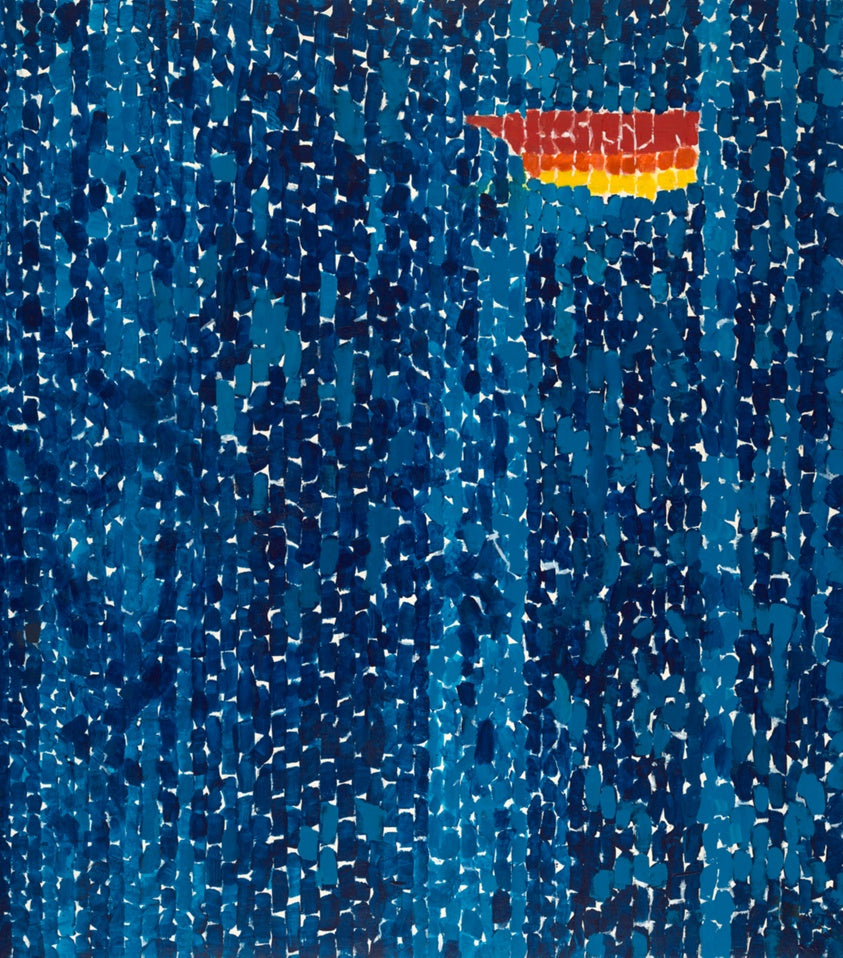Feature image: Frank Godwin, Philadelphia Patriotic Scene via American Illustration
Fireworks, Flags, and Freedom in American Art History
The Fourth of July is more than a date on the calendar. It is a celebration of independence, tradition, and national spirit. For over two centuries, artists across the United States have drawn inspiration from this holiday. Their works show fireworks in the sky, flags waving in the wind, and families gathered in quiet joy. Through paintings, prints, and photographs, these artists have recorded the visual symbols that define America’s birthday. Their work reflects pride, freedom, and a shared cultural memory.

Winslow Homer’s Americana: Subtle Yet Powerful
Winslow Homer rarely painted fireworks or parades. Still, his work captures the quiet strength of American life. In paintings like Snap the Whip (1872), children play in open fields beneath the bright summer sky. The scene feels timeless and full of innocence. Although not painted for the Fourth of July, it reflects values often associated with the holiday: community, freedom, and youth. Homer’s careful observation of rural life helped shape a national image that was both simple and powerful.

Childe Hassam and the Flag Series
Few artists have expressed American pride with the grace and clarity of Childe Hassam. His Flag Series, painted during World War I, depicts city streets adorned with the colors red, white, and blue. The Avenue in the Rain (1917) stands out for its rhythm and patriotic tone. American flags dominate the canvas, floating across a rainy Fifth Avenue. Although painted during wartime, these works convey the unity and spirit often associated with the Fourth of July. Hassam’s paintings capture the pride of a country that stands tall in moments of both challenge and celebration.

Fireworks on Canvas: Capturing the Spectacle
The spectacle of fireworks has long been a favorite subject for artists. James McNeill Whistler’s Nocturne in Black and Gold: The Falling Rocket (1875) captures the dazzling effect of sparks bursting across the night sky. The work is soft, abstract, and emotional. It shows the feeling of watching fireworks, rather than the literal image. Later artists, such as Alma Thomas, also embraced color and movement in their work. Her piece Starry Night and the Astronauts (1972) glows with pattern and rhythm, recalling a sky full of light. These images reflect the joy and wonder that fireworks bring on the Fourth of July. They remind us that celebration can be a source of beauty in art.

Norman Rockwell’s Freedom of Speech
One of the most iconic images of American ideals appears in Norman Rockwell’s Freedom of Speech (1943). Part of his Four Freedoms series, the painting shows a working-class man standing tall among seated neighbors at a town meeting. He wears a worn jacket and speaks with confidence and dignity. Rockwell based the image on real people in his Vermont community, using a local setting to express universal values. Though the painting does not show fireworks or parades, it reflects the spirit of the Fourth of July. It celebrates one of the most cherished American freedoms: the right to speak openly in a democratic society. Rockwell’s art captures the strength of civil discourse and the quiet pride of everyday citizens. This image continues to symbolize the values that make Independence Day meaningful.

Photography and Public Memory
In the 20th century, photographers took the role of documentarians, preserving Fourth of July celebrations in real time. Gordon Parks, Dorothea Lange, and Margaret Bourke-White photographed families at parades, crowds under fireworks, and streets filled with flags. These images show ordinary Americans, not posed but living through moments of history. Photographers like Parks ensured that the full spectrum of American life was captured in the visual record. In doing so, they preserved the holiday as one shared by all. Their photographs serve as a living memory, capturing the essence of how Independence Day looks and feels.

Contemporary Takes on the Fourth
Contemporary artists continue to explore the meaning of the Fourth of July. Some reflect on tradition, while others experiment with form. Faith Ringgold, for example, used the American flag in her story quilts to explore both celebration and struggle. Her work highlights the complexities within American identity while still respecting its symbols.

Jasper Johns approached the flag as a visual object. His Flag (1954–55) reimagined its structure in paint and collage. Although not tied to a specific holiday, the piece invites reflection on what the flag means and how it can be represented. These works expand our view of what patriotic art can be.

A Celebration Shared Through Art
The Fourth of July holds a unique place in American culture. Artists have helped shape its image and preserve its meaning. From early painters like Winslow Homer to modern voices like Ringgold and Johns, each work adds to a long tradition of visual celebration.
These artworks remind us of the joy and unity that this holiday represents. Through their colors, scenes, and symbols, they tell the story of a country proud of its independence, committed to its ideals, and inspired by its people. The art of the Fourth of July is not just decoration. It is a living testament to the American spirit.
©ArtRKL® LLC 2021-2025. All rights reserved. This material may not be published, broadcast, rewritten or redistributed. ArtRKL® and its underscore design indicate trademarks of ArtRKL® LLC and its subsidiaries.
All archival images in this article are used under fair use for educational and non-commercial purposes. Proper credit has been given to photographers, archives, and original sources where known.





